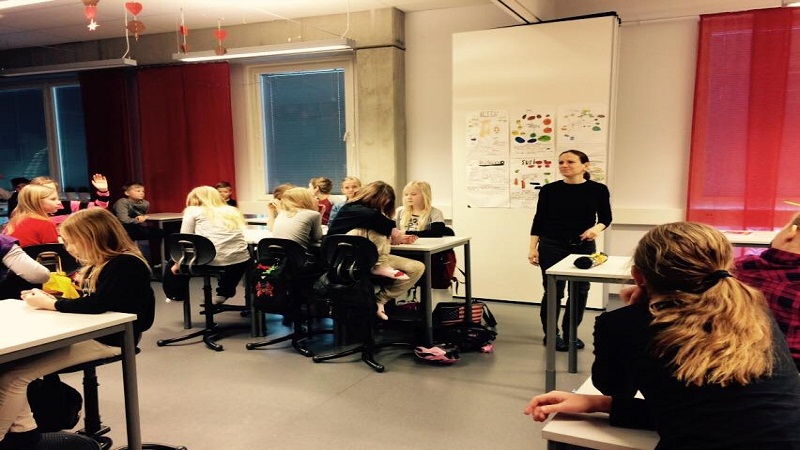The use of Internet technologies and distance learning opens new opportunities for continuous training of specialists and retraining of specialists, obtaining a second education, making training more accessible.
At the same time, the need for basic education throughout life or retraining develops the potential for distance learning. With the development and dissemination of Internet technologies, distance learning has created new opportunities. In the world, there were a huge number of distance learning courses and entire universities of distance learning.
Advantages of distance learning
 Technologically – training using modern software and hardware makes e-education more effective. New technologies make it possible to make visual information vivid and dynamic, to build the education process itself, taking into account the active interaction of the student with the training system.
Technologically – training using modern software and hardware makes e-education more effective. New technologies make it possible to make visual information vivid and dynamic, to build the education process itself, taking into account the active interaction of the student with the training system.
The development of Internet networks, high-speed Internet access, the use of multimedia technologies, sound, the video makes distance learning courses full and interesting. Read more: 4 Reasons Sending Your Special Needs Kiddo to Summer Camp is a Great Idea
(US educational institutions offered distance courses on the following technical basis (as a percentage of total):
Advantages of distance learning • two-way interactive video (two-way interactive video) -57%;
- one-way video, two-way audio (one-way video, two-way audio) -24%;
- One-way live video -9%;
- one way prerecorded video -52%;
- audio graphics (audio-graphic) -3%;
- audio conference (two-way audio) -11%;
- audio cassettes (one way audio) -10%;
- two way online interactions -14%;
- Internet -36%.).
A comparison of the effectiveness of distance learning and classroom instruction based on a survey of US teachers at institutions offering distance learning courses and where such training is not available: according to 57% of teachers, the results of distance learning are not inferior or even superior to traditional studies. 33.3% of the teachers surveyed believe that in the coming years the results of distance education will exceed the results of the classroom. Read more: How to Contribute to Your Child’s Early Development at Home
You can learn from virtually anywhere in the world, where there is a computer and the Internet. This makes the learning process more accessible and organizationally much easier than classical training. In your city, where you live, there may not be the courses you need. To start distance learning it is enough to find the course you are interested in on the Internet, register on the site and pay through the bank the cost of training. On the face of the ease of organizing the learning process, both for the trainees and the organizers of the training, the absence of formal restrictions at the start of training.
In this case, a person can study in another country, being on another continent, at a convenient time, while not needing visas, tickets, hotels.
As a rule, distance learning is cheaper than conventional training, primarily due to lower costs for travel, accommodation in another city, lower costs for organizing the courses themselves (no need to pay for a study room, fewer attendants, teacher costs can be reduced and t .). So IBM has developed an introductory e-Learning course for every new manager. The traditional full-time six-week course is now taught in the following ratio: 75% e-Learning and 25% in the class. At the moment, the following benefits can be noted: the program saved $ 24 million, the cost of one day of training fell 3 times – from $ 400 to $ 135. At the same time, the volume of educational content increased 5-fold.
The individuality of distance learning systems
The individuality of distance learning systemsDistance learning is more individualized, more flexible, the student himself determines the pace of training, can return several times to individual lessons, can skip individual sections, etc. The listener studies the teaching material during the whole period of study, and not only during the session, which guarantees deeper residual knowledge. Such a system of education makes the student engage in self-study and get skills of self-education.
Experience shows that a student studying remotely becomes more independent, mobile and responsible. Without these qualities, he will not be able to learn. If they were not originally, but the motivation for learning is great, they develop and after the end of the training, specialists who are really in demand on the market left.
Documentation of the learning process – the instructor may have the training course, the electronic correspondence with the tutor, and he can apply to them later, as necessary.
Distance learning provides the possibility of training more people, increases interest in learning, increases the productivity of teaching, allows you to learn when necessary, attracts people of different age groups.
Distance learning makes the learning process more creative and individual, opens new opportunities for creative expression of the trainee.
The introduction of distance learning reduces the nervousness of students when passing a test or examination. It’s no secret that the excitement and fear of the teacher do not allow some students to show their knowledge completely. The subjective factor of evaluation is removed. The psychological impact caused by the influence of the group or the student’s progress in other subjects is removed.
Good results are obtained by using distance training in relaxation pauses and other special methods for resting the learner and relieving stresses.
Distance learning is individualized, the ability to adapt to the style of work of each student and teacher, providing tools for self-adjustment.
The use of modern Internet technologies and distance learning makes it easy to form various virtual professional communities (for example, teachers’ communities), communicate with teachers among themselves, discuss problems, solve common problems, exchange experiences, information, etc.
So, Google, the leading free-for-all search engine, reported on a search tool for finding educational literature. The utility, called Google Scholar, is a new search platform that enables users to search for educational publications in a variety of articles, theses, books, technical reports, and documentation.
Disadvantages of distance learning
The absence of direct face-to-face communication between students and the teacher. And when there is not a person around who can emotionally color knowledge, this is a significant disadvantage for the learning process. It is difficult to create a creative atmosphere in a group of students.
Need for a personal computer and access to the Internet. The need for constant access to information sources. We need good technical equipment, but not everyone who wants to learn has a computer and access to the Internet, we need technical readiness for using distance learning.
High requirements for the formulation of the task of training, the administration of the process, the complexity of the motivation of listeners.
The need for a number of individual psychological conditions. For distance learning, a rigid self-discipline is necessary, and its result directly depends on the student’s independence and consciousness.
As a rule, students feel a lack of practical training. There is no constant control over the trainees, which for the Russian people is a powerful incentive.
The high cost of building a distance learning system, at the initial stage of the system creation, is great for the creation of a distance learning system, distance learning courses themselves and the purchase of technical equipment.
Temporary difficulties
Insufficient computer literacy of instructors and trainees, lack of distance learning experience, many teachers and students are not yet ready for this method of teaching, preferring classical education.
Insufficient development of information and communication infrastructure in Russia. Training programs and courses may not be developed well enough due to the fact that there are not so many qualified specialists who can create such teaching aids. There are few methodological materials for the preparation and conduct of distance learning.
Distance form of training contributes to the mass dissemination of education, making the training courses available in comparison with traditional full-time education. Nevertheless, we must admit the low quality of distance learning, which is natural in the context of existing priorities – minimization of costs.
Further development of distance learning systems implies maximum interactivity. In fact, it’s no secret that training only then becomes full, when an imitation of real communication with the teacher is achieved, this is what we should strive for. It is necessary to use a combination of various types of electronic communications, which makes it possible to compensate for the lack of personal contact through virtual communication. Further improvement of distance learning courses is associated with the following factors:
Multimedia – sounded video and slide films, animation, graphics;
- Rich interactivity, including mathematical models of processes and phenomena;
- Use streaming audio and video.
- A variety of control and test tasks;
- A large amount of educational material, which, thanks to multimedia, is easily assimilated;
- Communication of listeners among themselves;
- Use of combined methods of delivery of courses: Internet, Intranet, programs on CD-ROM, etc.
It may like also: http://studywatches.com/2018/05/05/10-different-study-strategies/








